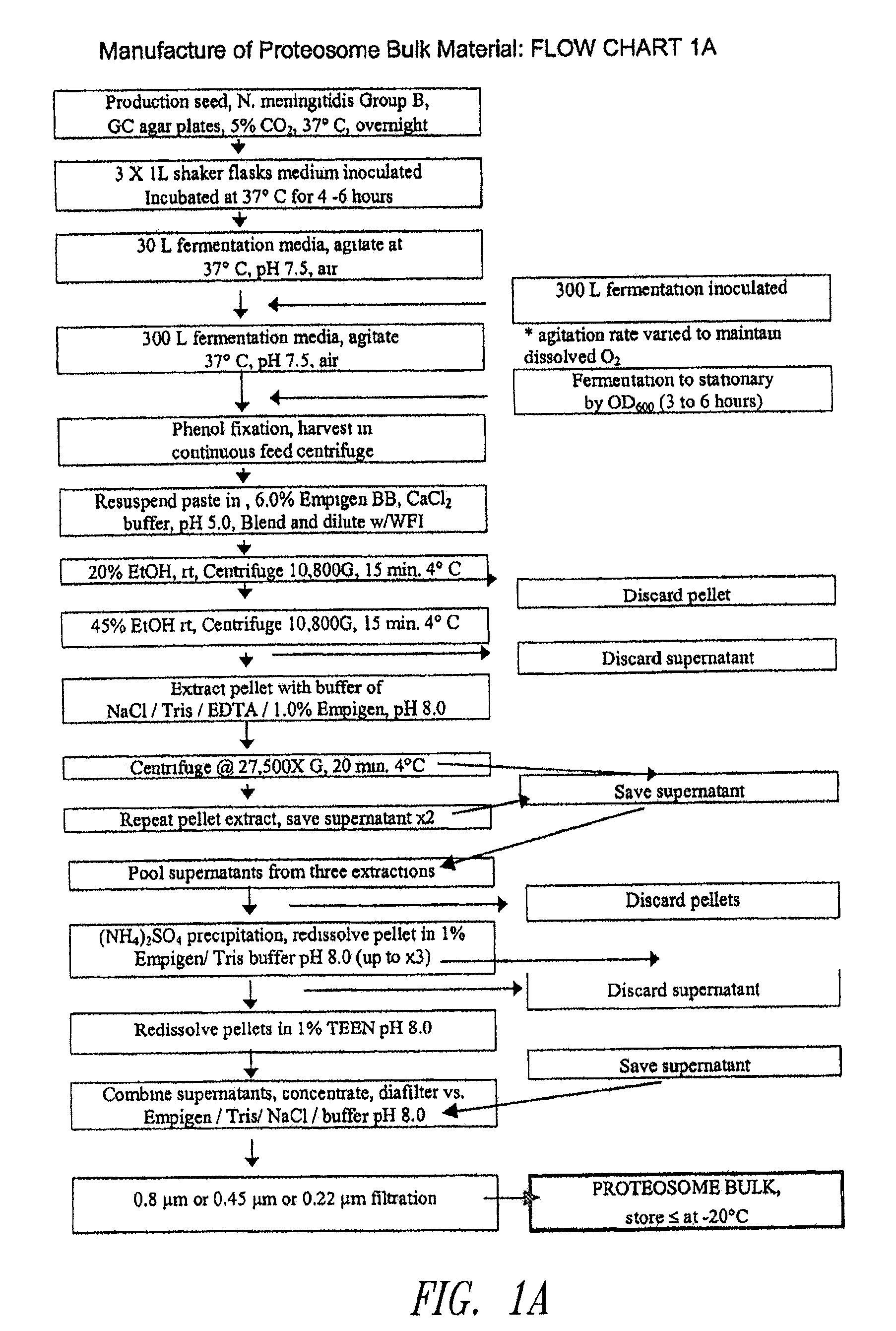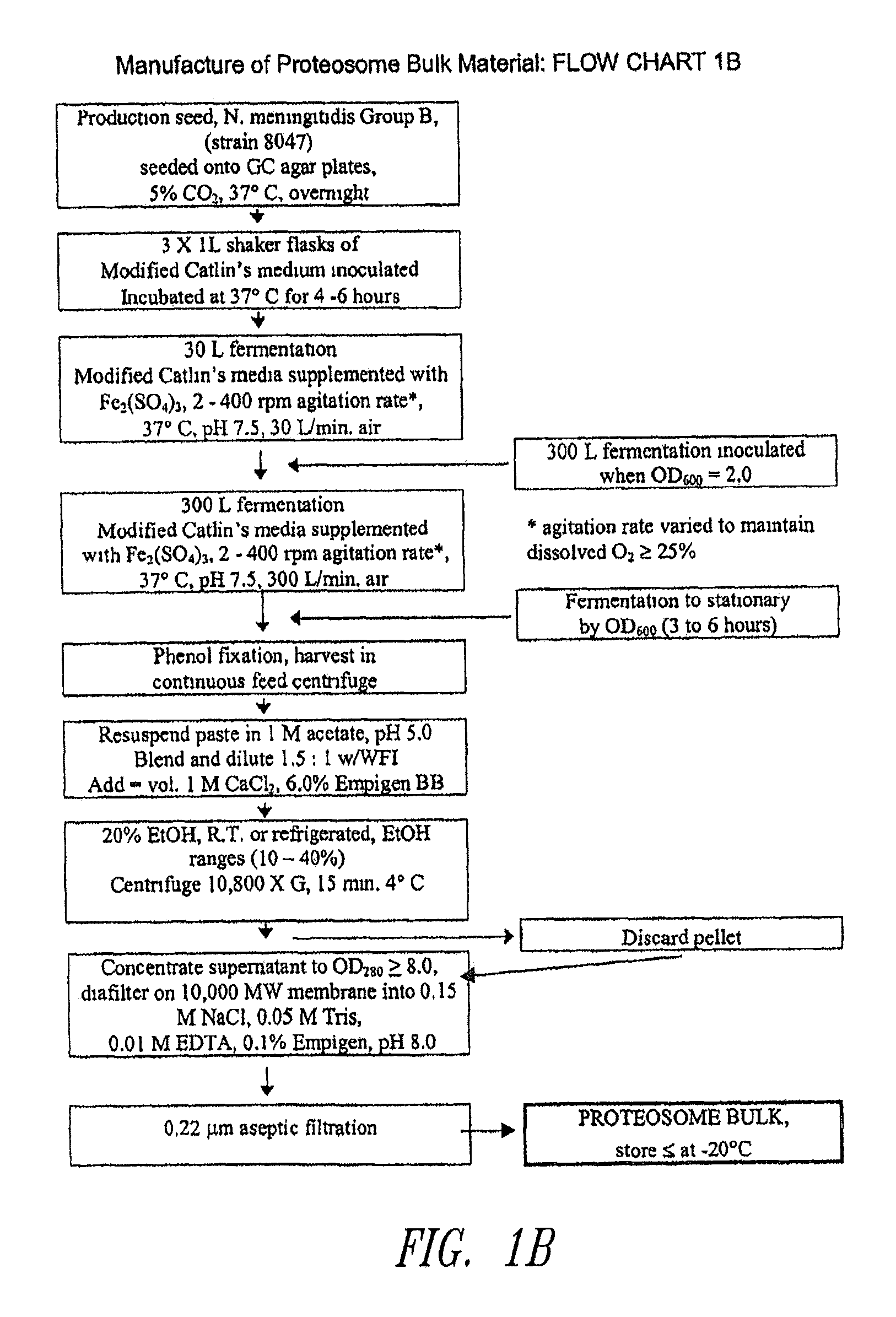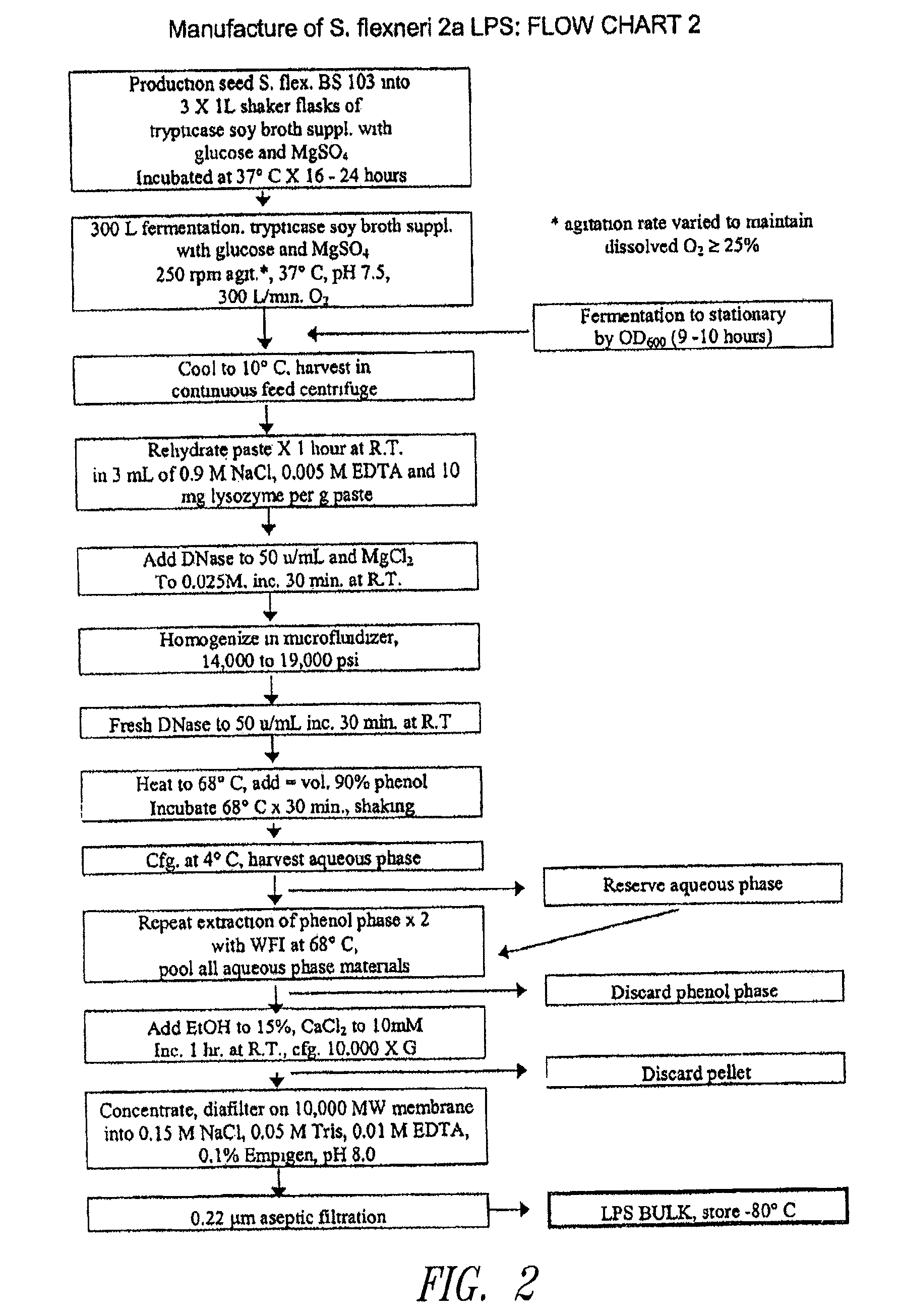Measles subunit vaccine
a technology of measles and subunits, applied in the field of vaccines and the treatment or prevention of infectious diseases, can solve the problems of inability to protect children younger than 9 months of age, and achieve the effect of straight forward production
- Summary
- Abstract
- Description
- Claims
- Application Information
AI Technical Summary
Benefits of technology
Problems solved by technology
Method used
Image
Examples
example 1
Preparation of Proteosomes
[0073]Immunogens (e.g., measles virus antigens) may be formulated with Proteosomes to form a vaccine composition of the instant invention capable of eliciting a protective immune response in a human or animal subject. Proteosomes are useful as an adjuvant and are comprised of outer membrane proteins purified from Gram-negative bacteria. Methods for preparing Proteosomes are described in, for example, Mallett et al. Infect. Immun. 63:2382, 1995; U.S. Pat. No. 6,476,201 B1; U.S. Patent Application Publication No. 2001 / 0053368; and U.S. Patent Application Publication No. 2003 / 0044425. Briefly, a paste of phenol-killed Group B type 2 Neisseria meningitides was extracted with a solution of 6% Empigen® BB (EBB) (Albright and Wilson, Whithaven, Cumbria, UK) in 1 M calcium chloride. The extract was precipitated with ethanol, solubilized in 1% EBB-Tris / EDTA-saline, and then precipitated with ammonium sulfate. The precipitated Proteosomes were re-solubilized in 1% EB...
example 2
Preparation of Liposaccharides
[0075]The example in Flowchart 2 (FIG. 2) shows the process for the isolation and purification of LPS from S. flexneri or P. shigelloides. This process can similarly be used for preparing LPS from other gram-negative bacteria, including Shigella, Plesiomonas, Escherichia, and Salmonella species. Following growth of bacteria by fermentation in 300 L, the bacteria were sedimented and the cell paste was re-hydrated with 3 mL 0.9M NaCl, 0.005 M EDTA and 10 mg lysozyme per gram of bacterial paste. Lysozyme digestion was allowed to proceed for 1 hour at room temperature. Then 50 U / ml Benzonase® (DNase) in 0.025 M MgCl2 was added and DNase digestion was allowed to proceed at room temperature for 30 minutes. The suspension was then cracked by passage through a microfluidizer at 14,000 to 19,000 psi. Fresh DNase (50 U / mL) was added, and digestion of the suspension was allowed to proceed for a further 30 min at room temperature. The digested cell suspension was h...
example 3
Preparation and Characterization of Proteosome:Liposaccharide Adjuvant
[0076]A Proteosome adjuvant formulation of the instant invention was manufactured by admixing Proteosomes and LPS to allow a presumably non-covalent association. The LPS can be derived from any of a number of gram negative bacteria, such as Shigella, Plesiomonas, Escherichia, or Salmonella species (see Example 2), which is mixed with the Proteosomes of Example 1, as described in Flowchart 3 (FIG. 3). Briefly, Proteosomes and LPS were thawed overnight at 4° C. and adjusted to 1% Empigen® BB in TEEN buffer. The two components were mixed, for 15 minutes at room temperature, at quantities resulting in a final wt / wt ratio of between about 10:1 and about 1:3 of Proteosome:LPS. The Proteosome:LPS mixture was diafiltered on an appropriately sized (e.g., Size 9) 10,000 MWCO hollow fiber cartridge into TNS buffer (0.05 M Tris, 150 mM NaCl pH 8.0). The diafiltration was stopped when Empigen® content in the permeate was <50 p...
PUM
| Property | Measurement | Unit |
|---|---|---|
| particle size distribution | aaaaa | aaaaa |
| temperature | aaaaa | aaaaa |
| temperature | aaaaa | aaaaa |
Abstract
Description
Claims
Application Information
 Login to View More
Login to View More - R&D
- Intellectual Property
- Life Sciences
- Materials
- Tech Scout
- Unparalleled Data Quality
- Higher Quality Content
- 60% Fewer Hallucinations
Browse by: Latest US Patents, China's latest patents, Technical Efficacy Thesaurus, Application Domain, Technology Topic, Popular Technical Reports.
© 2025 PatSnap. All rights reserved.Legal|Privacy policy|Modern Slavery Act Transparency Statement|Sitemap|About US| Contact US: help@patsnap.com



